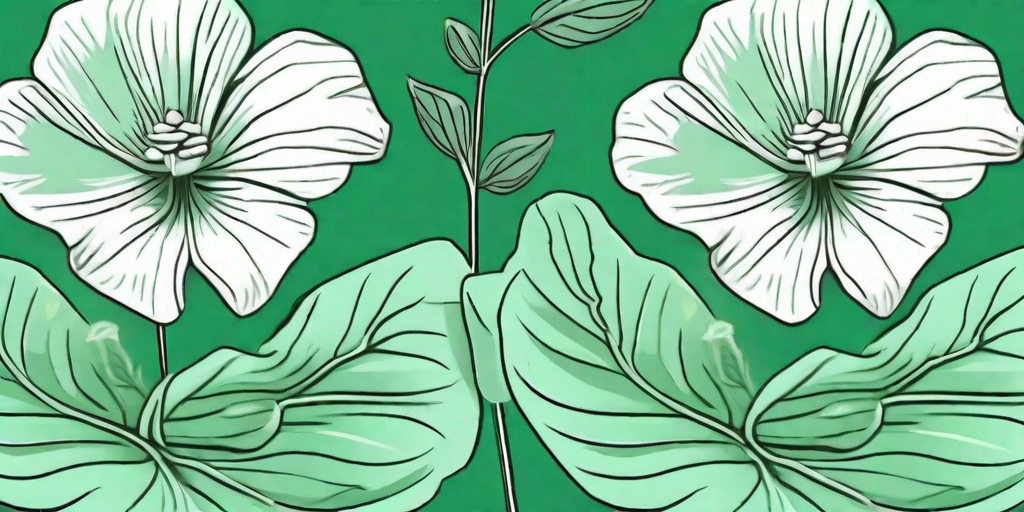
The Mallow plant, a humble green wonder, has been quietly making waves in the world of botany, gastronomy, and medicine. From being the key ingredient in the gooey, fluffy marshmallows we all love, to boasting a plethora of medicinal properties, the Mallow plant is a true jack-of-all-trades. But what makes this plant so special? Let's dive in and find out.
The Mallow Plant: A Botanical Overview
Belonging to the Malvaceae family, the Mallow plant, also known as Malva, is a group of about 30 species of flowering plants. These plants are native to Europe and Asia, but have since spread to other parts of the world. They are known for their showy flowers and soft, velvety leaves.
But the Mallow plant is not just a pretty face. It's also a hardy survivor. It thrives in a variety of environments, from salty soils to city streets. It's a plant that doesn't just survive, it thrives, making it a favorite among gardeners and botanists alike.
The Mallow Plant's Key Features
The Mallow plant is a perennial, meaning it can live for more than two years. It grows up to 1.5 meters tall and has a spread of about 1 meter. The leaves are round to heart-shaped, with a soft, velvety texture. The flowers, which bloom from June to September, range in color from pink to purple.
But the Mallow plant's beauty is more than skin deep. Hidden within its leaves, flowers, and roots are a host of medicinal properties that have been used for centuries.
The Mallow Plant in Gastronomy: From Marshmallows to More
When it comes to the culinary world, the Mallow plant is a bit of a superstar. Its leaves, flowers, and roots are all edible and have been used in a variety of dishes throughout history.
But perhaps the Mallow plant's most famous contribution to gastronomy is the marshmallow. Yes, you read that right. Those fluffy, sugary treats that you love to roast over a campfire or dunk in your hot chocolate owe their existence to the Mallow plant.
The Origins of Marshmallows
The original marshmallow was a medicinal confection made from the Mallow plant. The plant's roots were boiled in sugar syrup until they thickened. Once cooled, the mixture was cut into pieces and dusted with cornstarch to prevent sticking. These early marshmallows were used to soothe sore throats and coughs.
Today's marshmallows have strayed far from their medicinal roots. Modern marshmallows are made with gelatin instead of Mallow root, but the name remains as a nod to the plant's historical significance.
The Mallow Plant's Medicinal Marvels
The Mallow plant's medicinal properties are as diverse as they are impressive. From soothing irritated skin to easing digestive issues, this plant has been used as a natural remedy for centuries.
But before we delve into the specifics, a word of caution: While the Mallow plant has a long history of medicinal use, it's always important to consult with a healthcare professional before starting any new treatment.
Skin Soother
The Mallow plant's leaves and flowers are rich in mucilage, a sticky substance that has soothing properties. When applied topically, Mallow can help soothe irritated skin, reduce inflammation, and speed up wound healing.
It's also been used to treat a variety of skin conditions, including eczema, psoriasis, and burns. Some even swear by it as a natural anti-aging treatment, claiming that it helps to smooth wrinkles and improve skin elasticity.
Digestive Aid
But the Mallow plant's benefits aren't just skin deep. It's also been used as a digestive aid. The plant's high mucilage content can help soothe the digestive tract, easing conditions like gastritis, irritable bowel syndrome, and acid reflux.
It's also been used as a natural laxative, helping to relieve constipation and promote regular bowel movements. Talk about a plant with guts!
FAQs About the Mallow Plant
Still have questions about the Mallow plant? Don't worry, we've got you covered. Here are some of the most frequently asked questions about this versatile plant.
Is the Mallow plant edible?
Yes, the Mallow plant is edible. Its leaves, flowers, and roots can all be eaten. The leaves can be used in salads, the flowers can be used to garnish dishes, and the roots can be boiled and eaten like a vegetable.
Can I grow a Mallow plant at home?
Absolutely! The Mallow plant is a hardy plant that can thrive in a variety of conditions. It prefers full sun to partial shade and well-drained soil. It's also resistant to most pests and diseases, making it a great choice for beginner gardeners.
What are the medicinal properties of the Mallow plant?
The Mallow plant has a wide range of medicinal properties. It's been used to soothe irritated skin, ease digestive issues, and even as a natural laxative. However, it's always important to consult with a healthcare professional before starting any new treatment.
Wrapping Up
From fluffy treats to medicinal marvels, the Mallow plant truly is a wonder of nature. Whether you're a botanist, a chef, or just a curious reader, there's no denying the charm and versatility of this remarkable plant.
So next time you're roasting marshmallows over a campfire, take a moment to appreciate the humble plant that started it all. Who knows, it might just inspire you to explore the world of botany, gastronomy, and natural medicine a little bit more.















